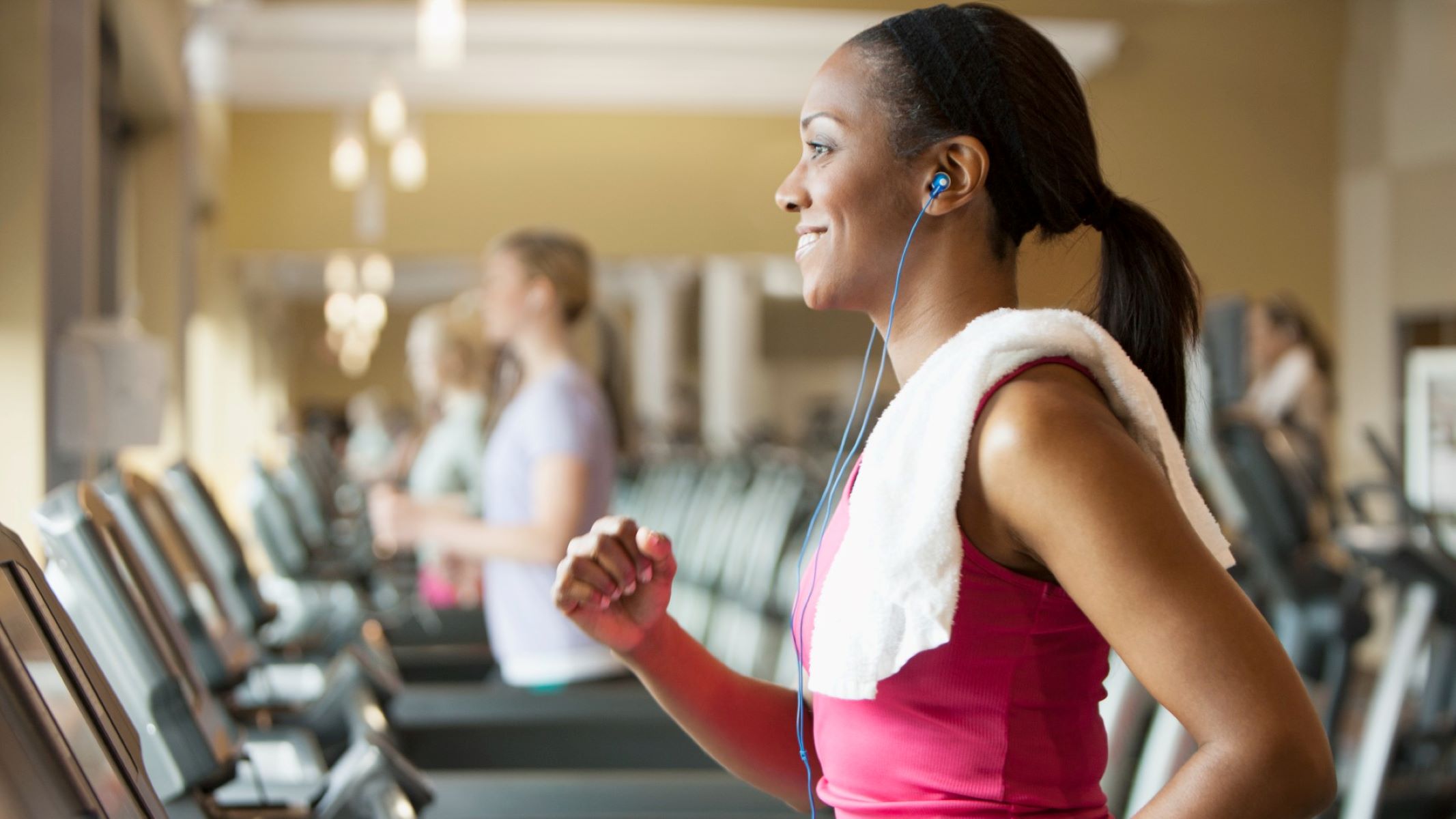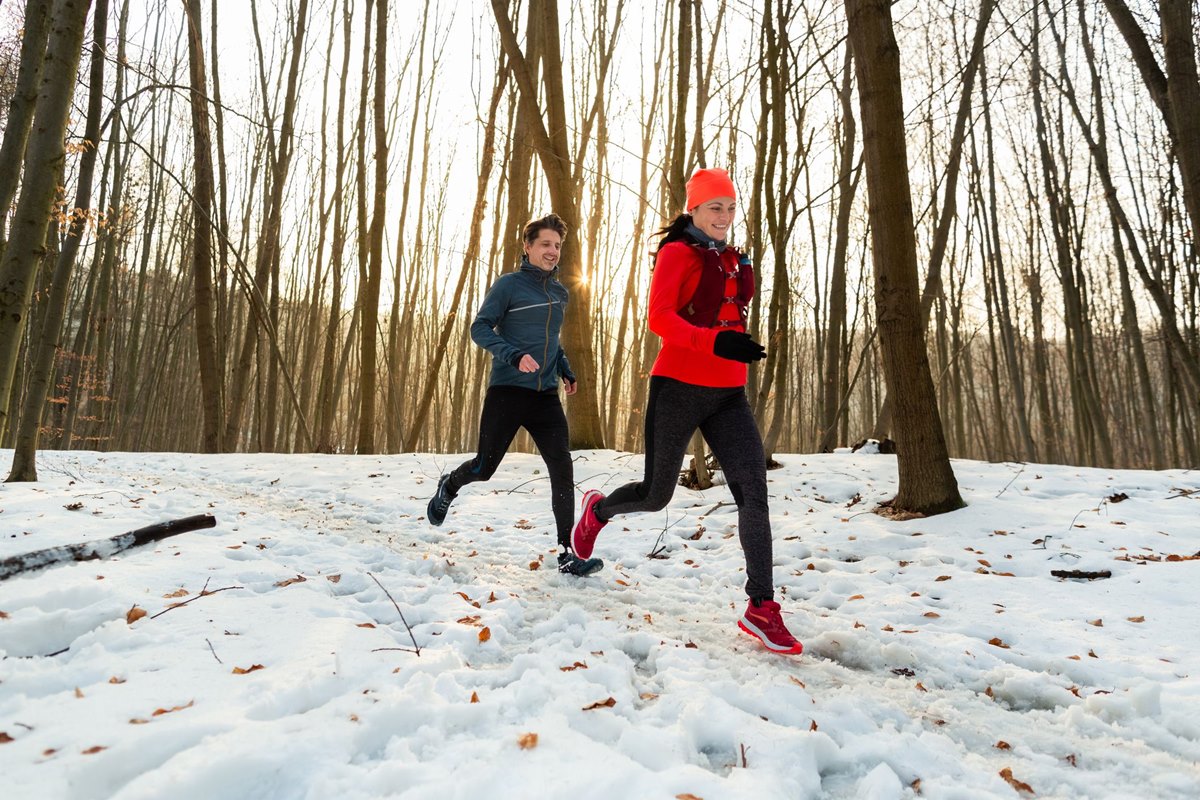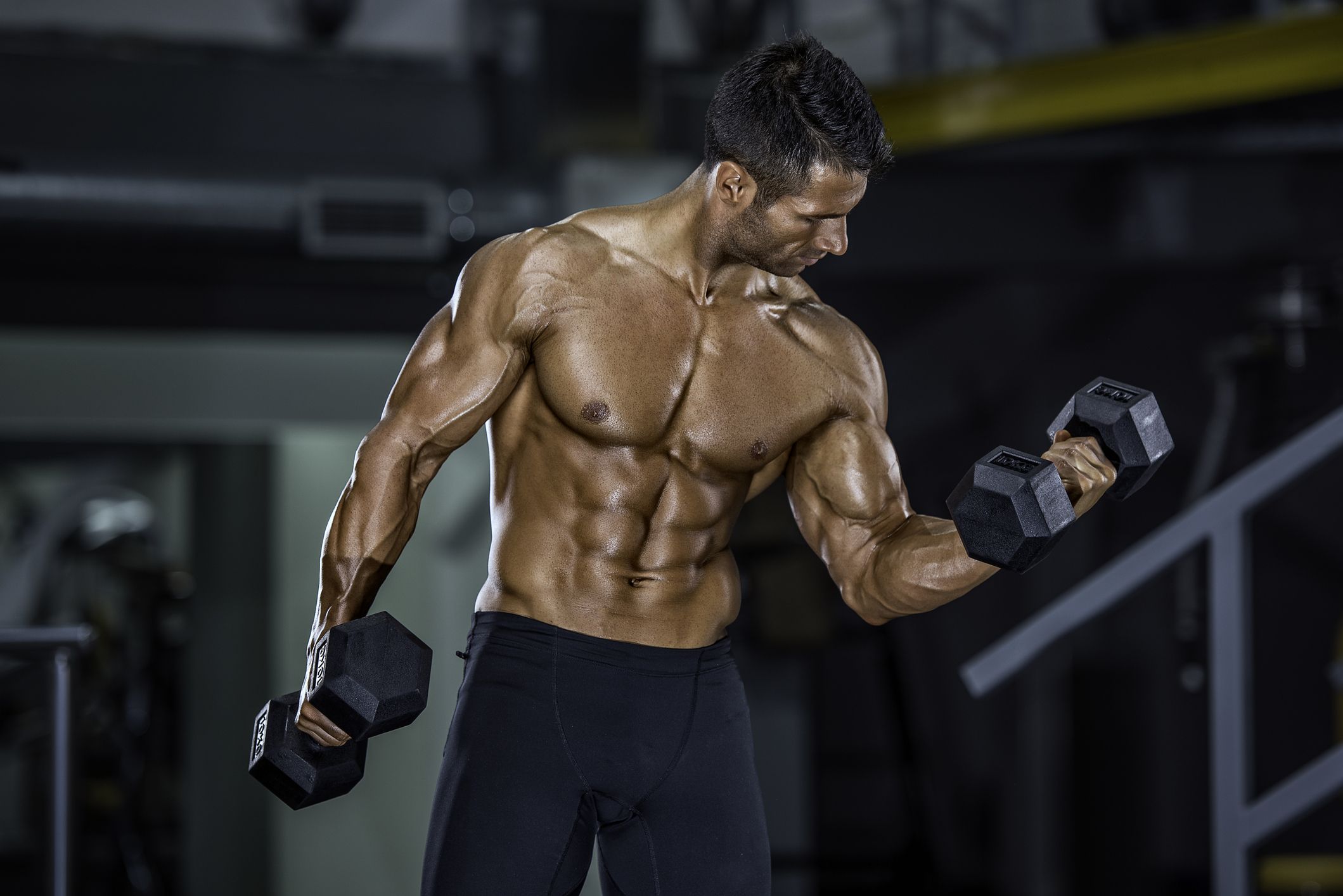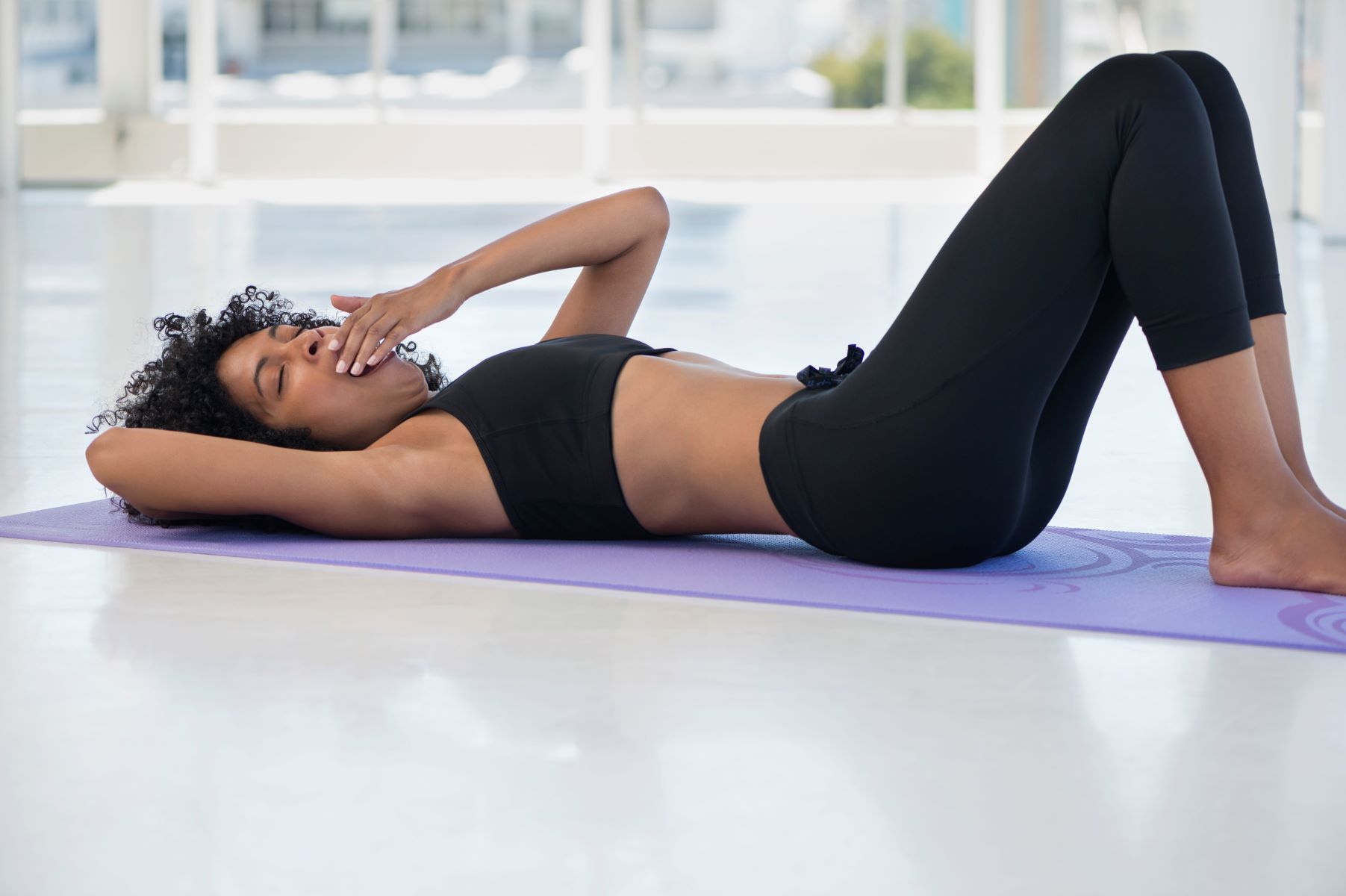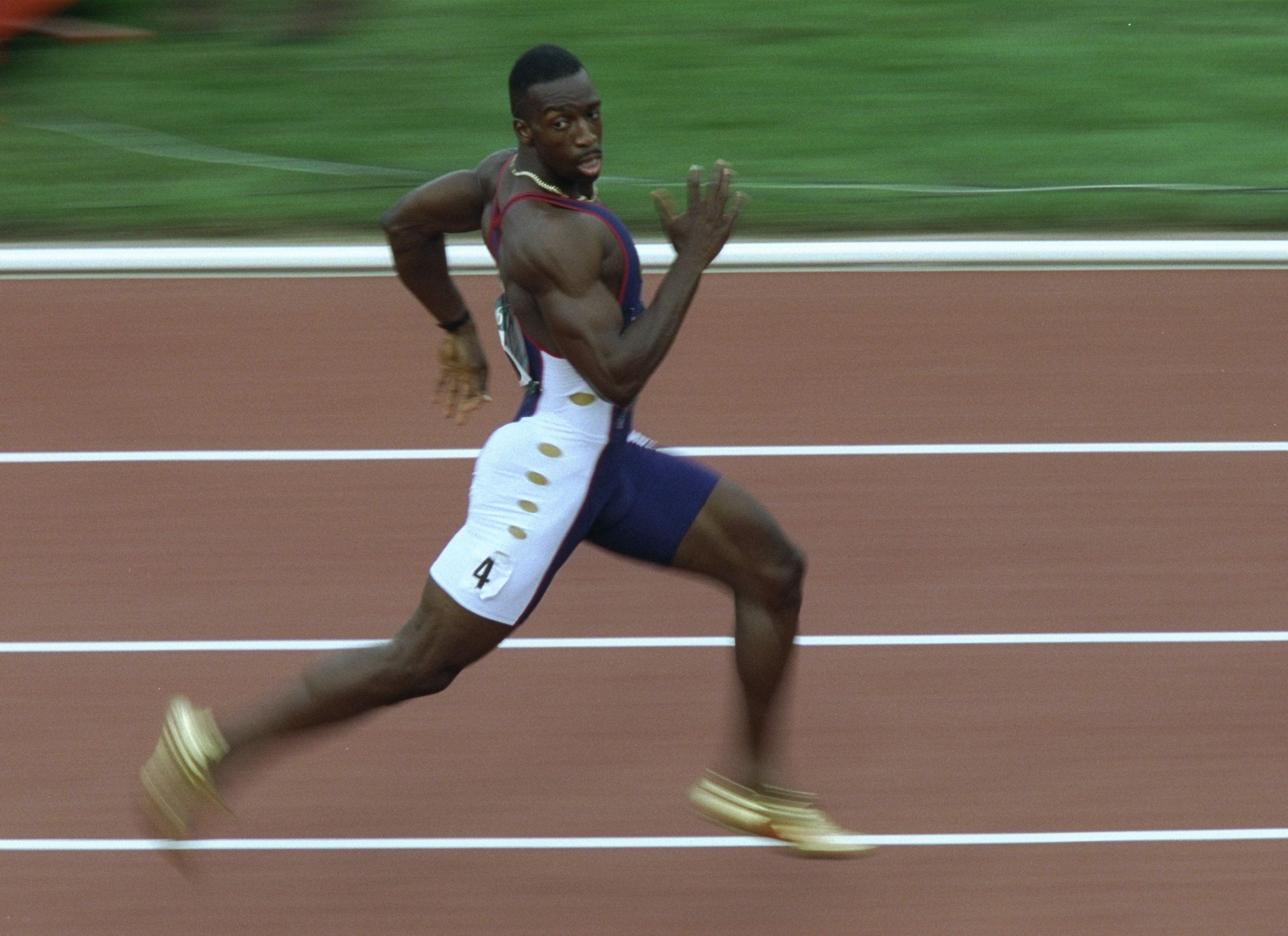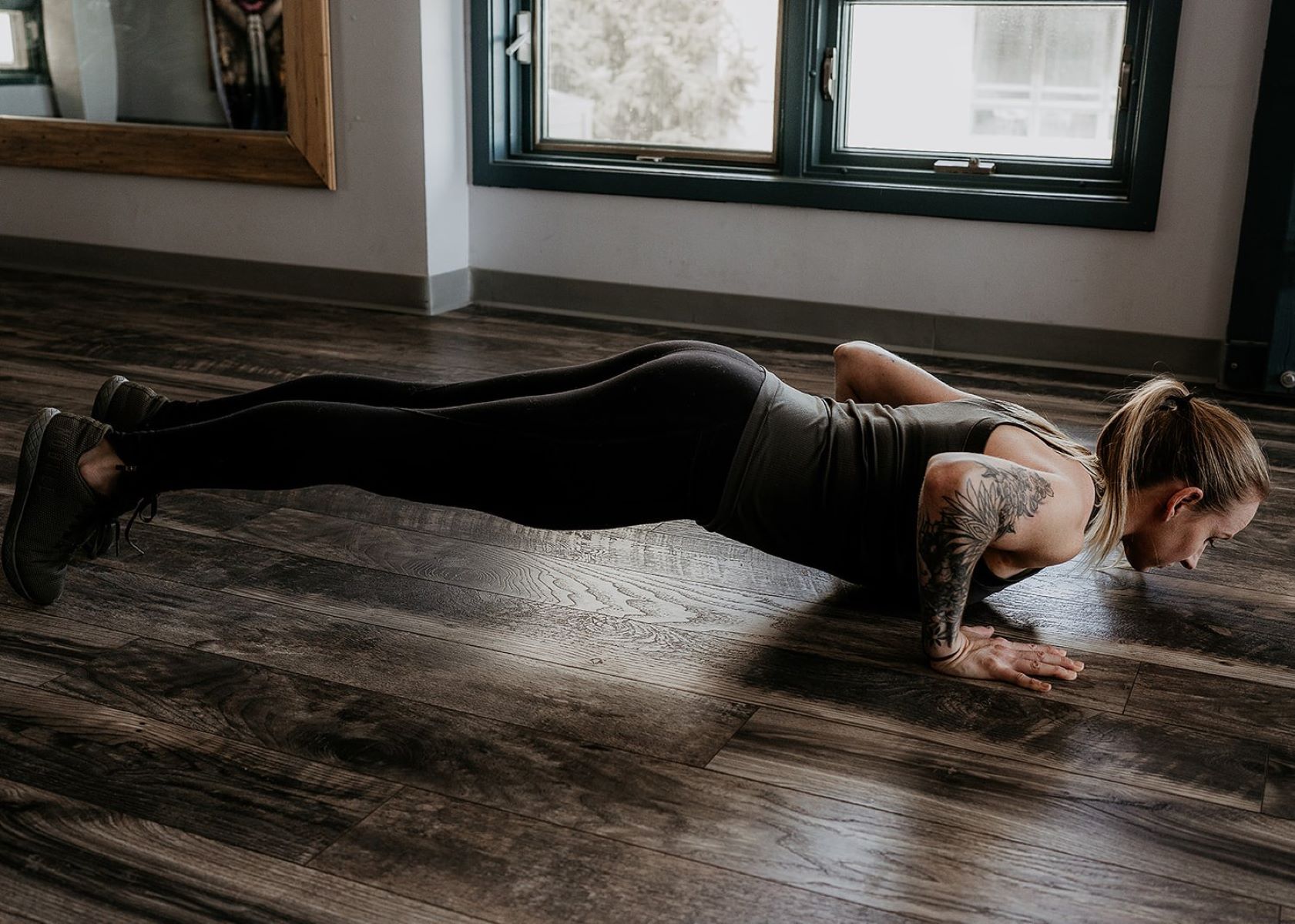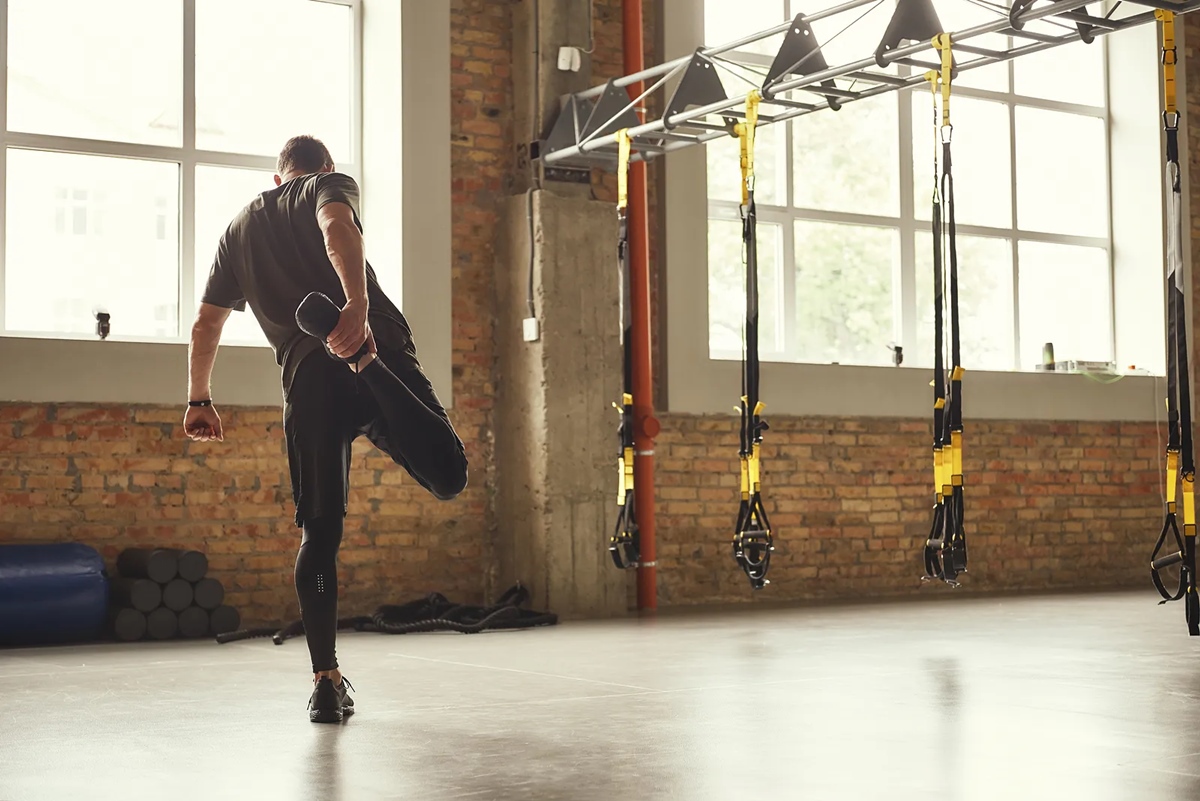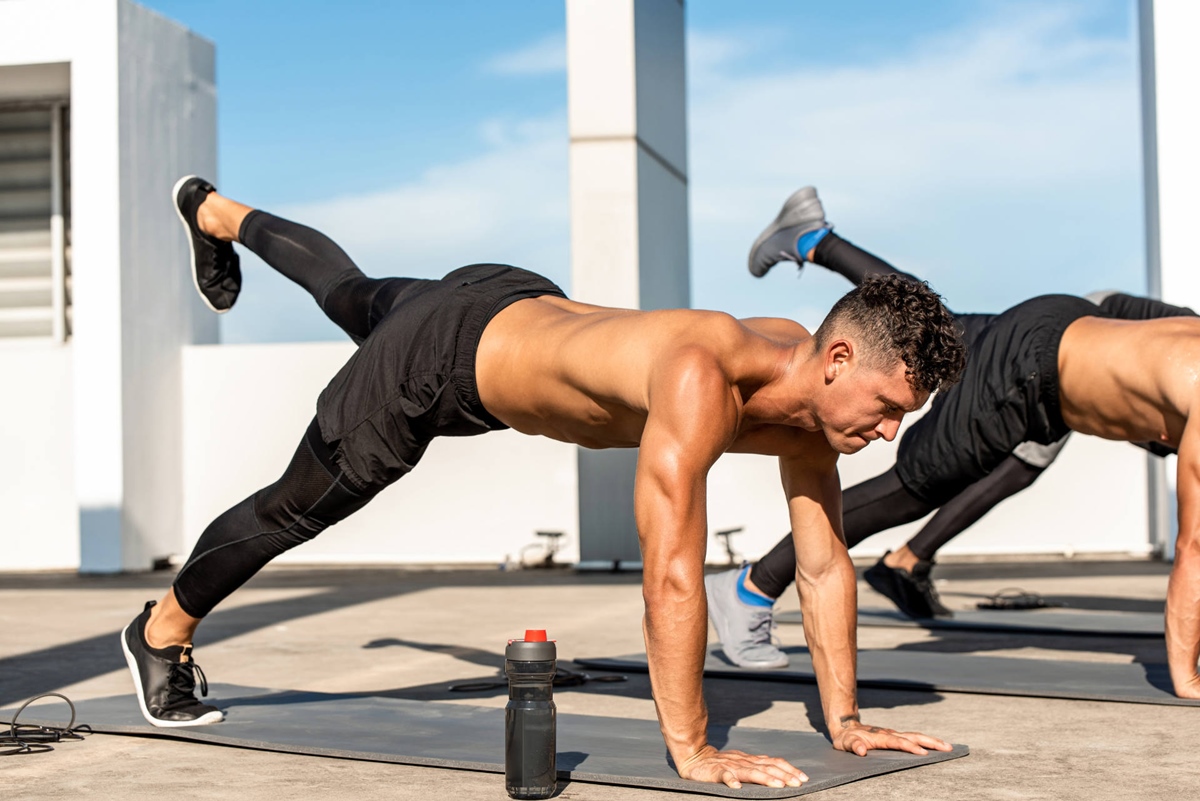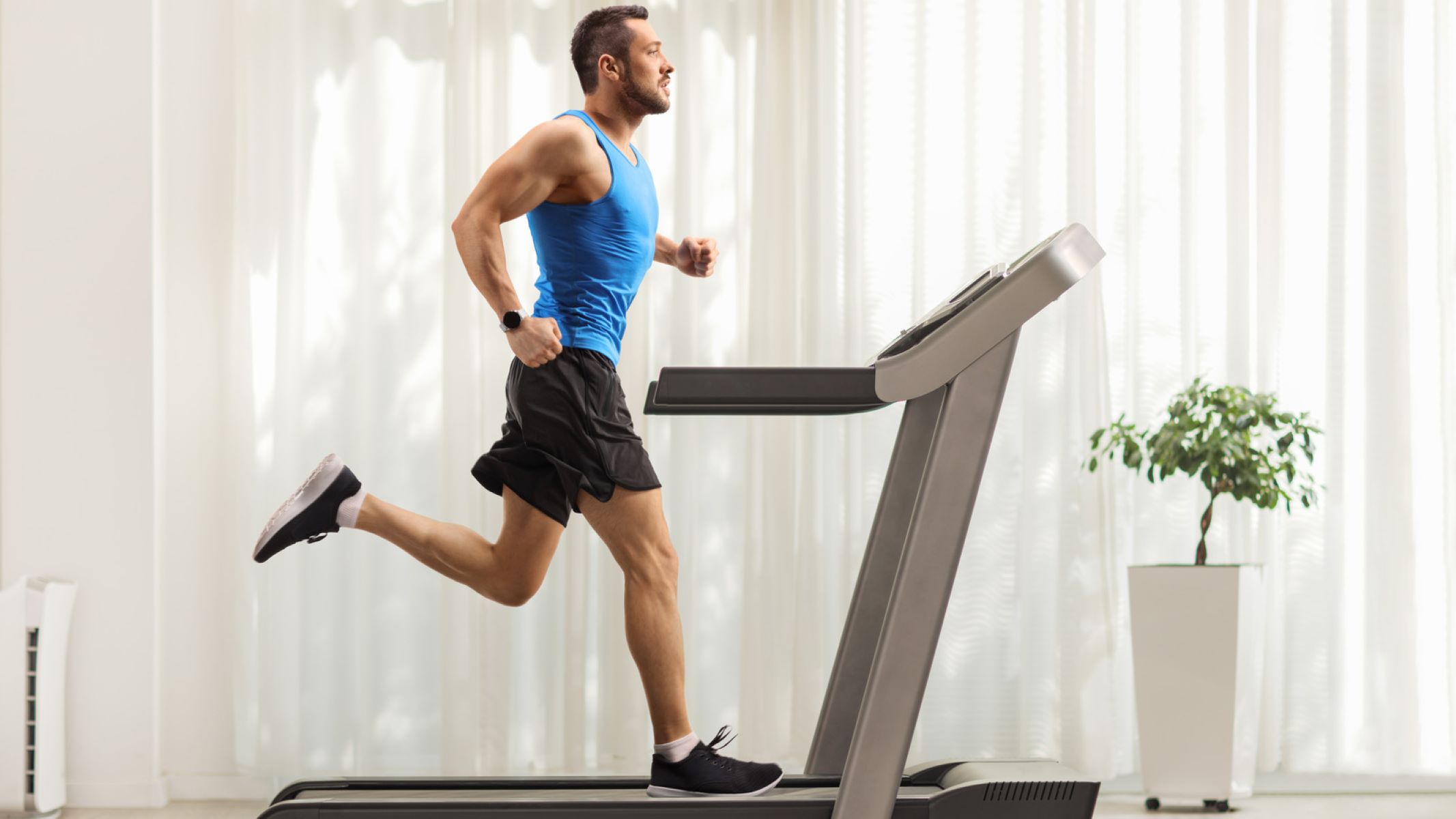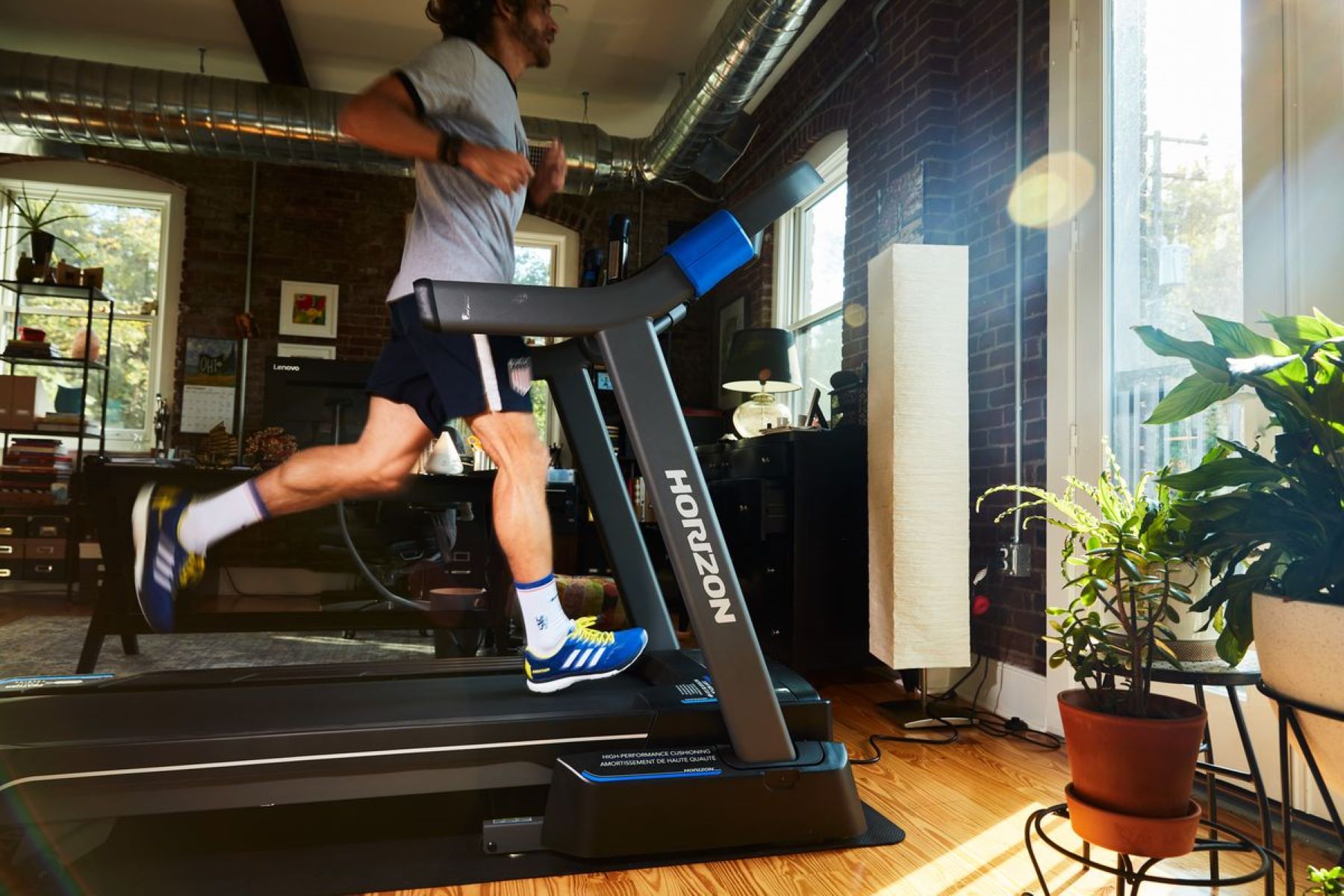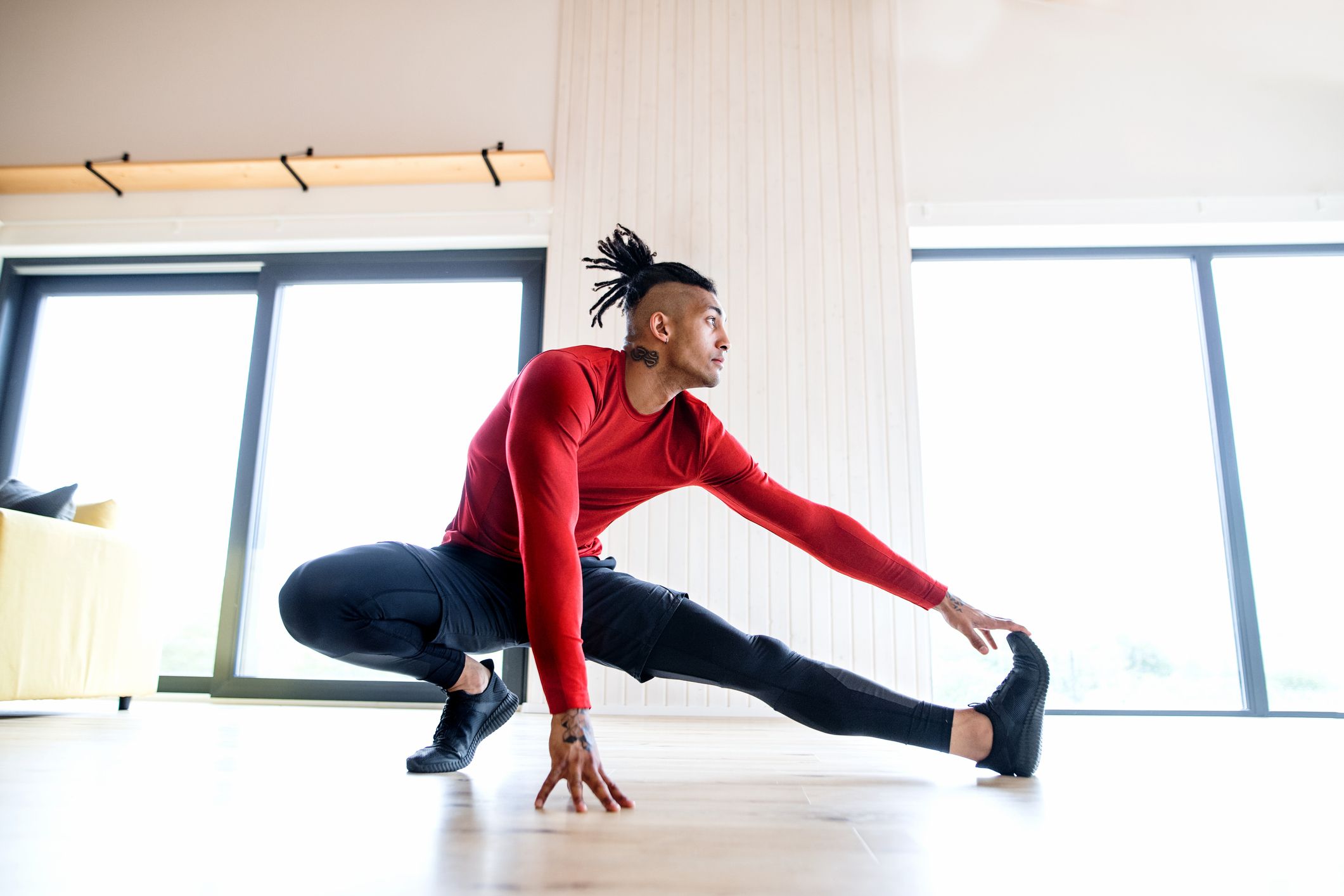

Featured
How To Warm Up For A Workout
Modified: August 19, 2023
Get ready to kickstart your workout with our featured warm-up routine. Learn how to properly prepare your body and prevent injuries.
Introduction
Warming up before a workout is a crucial step that often gets overlooked or rushed in our quest to dive straight into intense physical activity. However, taking the time to properly warm up can have a significant impact on performance, injury prevention, and overall fitness progress.
The purpose of a warm-up is to prepare both the body and the mind for the upcoming exertion. It allows the muscles, joints, and cardiovascular system to gradually adapt to the increased demands that exercise places on them.
During a warm-up, the body’s temperature, heart rate, and blood flow all gradually increase, improving the efficiency of oxygen delivery to the muscles. Additionally, a well-executed warm-up can enhance flexibility, range of motion, and coordination, ensuring that you perform at your best.
While the benefits of warming up are clear, it’s important to note that not all warm-up routines are created equal. The type and duration of a warm-up should be tailored to the specific activity, individual fitness level, and any pre-existing injuries or conditions.
In the following sections, we will explore different types of warm-up exercises and provide recommendations for creating an effective warm-up routine. Whether you’re a seasoned athlete or just starting your fitness journey, understanding the importance of warming up and knowing how to do it right is key to maximizing your workout performance and minimizing the risk of injuries.
Importance of Warming Up
Warming up before engaging in any physical activity is essential for several reasons. By taking the time to prepare your body and mind, you can optimize your performance, reduce the risk of injuries, and enhance your overall fitness experience.
1. Increased Performance: A proper warm-up helps to gradually increase your heart rate and blood flow, which in turn improves circulation to the muscles. This increased blood flow delivers a greater supply of oxygen and nutrients, providing the necessary fuel for your muscles to perform at their best. Additionally, a warm-up triggers the release of hormones and enzymes that enhance muscle contraction and coordination, leading to improved overall performance.
2. Injury Prevention: Warming up is a crucial step in injury prevention. When you begin a workout with cold muscles, they are less pliable and more prone to strain or tear. However, a proper warm-up increases muscle elasticity, making them more flexible and less prone to injury. It also allows your joints to lubricate and loosen up, reducing the risk of joint-related injuries. Taking the time to warm up can significantly lower the chances of experiencing muscle pulls, strains, or sprains during your workout.
3. Improved Range of Motion: Engaging in dynamic stretches during a warm-up routine helps to improve your range of motion. By gradually moving your joints through their full range of motion, you can increase joint mobility and flexibility. This can be particularly beneficial for activities that require a wide range of motion, such as weightlifting, yoga, or martial arts.
4. Mental Preparation: Warming up is not just about preparing your body but also your mind. It gives you the opportunity to mentally focus and prepare for the upcoming workout. A warm-up allows you to transition from the demands of daily life to a more focused and present state, increasing your mental readiness for physical exertion. Taking a few minutes to engage in mindful breathing or visualization exercises can help set a positive mindset for the workout ahead.
By understanding the importance of warming up and consistently incorporating it into your routine, you can optimize your performance, prevent injuries, and make the most of your fitness journey. It’s a small investment of time that yields significant benefits, both in the short term and in your long-term fitness progress.
Types of Warm-Up Exercises
When it comes to warming up, there are various types of exercises that can be incorporated into your routine. Each type serves a specific purpose in preparing the body for physical activity. By combining these exercises, you can create a comprehensive warm-up routine that targets different aspects of fitness.
1. Dynamic Stretches: Dynamic stretches involve controlled movements that take joints and muscles through their full range of motion. Unlike static stretches, which involve holding a stretch for an extended period, dynamic stretches involve continuous movement. Examples of dynamic stretches include leg swings, arm circles, and walking lunges. These stretches help increase blood flow, warm up the muscles, and improve joint mobility.
2. Cardiovascular Warm-Up: Starting your warm-up with a few minutes of light cardiovascular exercise, such as brisk walking, jogging, or cycling, is an effective way to elevate your heart rate and gradually increase blood flow. This type of warm-up prepares the cardiovascular system for more intense activity, improving oxygen distribution and enhancing overall stamina.
3. Joint Mobilization and Activation: Joint mobilization exercises focus on gently moving the joints through their full range of motion, targeting specific areas that are commonly used during workouts. Examples include wrist circles, shoulder rolls, and ankle rotations. These exercises help to lubricate the joints and improve joint stability, reducing the risk of injuries and enhancing overall movement efficiency.
4. Specific Movement Preparation: This type of warm-up targets the muscle groups and movements that will be involved in your specific workout or activity. For example, if you’re preparing for a lower body workout, you might perform exercises such as bodyweight squats or lunges to warm up the leg muscles. If you’re going for a run, incorporating some dynamic leg swings and high knees can be beneficial. By mimicking the movements of your workout, you can prepare your muscles and nervous system for optimal performance.
Incorporating a variety of warm-up exercises not only physically prepares your body but also mentally focuses your mind on the upcoming activity. By customizing your warm-up routine to fit your specific needs, you can maximize the benefits and ensure a safe and effective workout.
Dynamic Stretches
Dynamic stretches are an essential component of a comprehensive warm-up routine. Unlike static stretches, which involve holding a stretch in a stationary position, dynamic stretches involve controlled movements that take your joints and muscles through their full range of motion. These dynamic movements not only help to warm up the body but also improve flexibility, mobility, and coordination.
Dynamic stretches are ideal for preparing the muscles for the specific movements and demands of your workout. They increase blood flow and warm up the muscles, making them more pliable and less prone to injury. Additionally, dynamic stretches activate the nervous system and improve neuromuscular coordination, helping you perform more efficiently during your workout.
Here are some common examples of dynamic stretches:
- Leg Swings: Stand near a wall or support and swing one leg forward and backward, keeping the leg straight. Repeat for 10-15 swings and then switch to the other leg. Leg swings help to warm up the hip flexors, hamstrings, and quadriceps.
- Arm Circles: Extend your arms straight out to the sides and make small circular movements forward and backward. Gradually increase the size of the circles. Arm circles warm up the shoulder joints and improve mobility.
- Walking Lunges: Take a step forward with your right foot and lower your body into a lunge position. Push off your right foot and bring your left foot forward into the next lunge. Continue taking alternating lunging steps for about 10-15 lunges. Walking lunges help to activate and warm up the muscles in the legs and hips.
- High Knees: Stand tall and jog in place while lifting your knees as high as possible. Keep a quick and steady pace. High knees increase heart rate, warm up the lower body, and improve coordination.
It’s important to perform dynamic stretches in a controlled manner, gradually increasing the range of motion and speed as your body warms up. Be mindful of your body’s limitations and avoid any movements that cause pain or discomfort.
Dynamic stretches can be customized based on your specific workout or activity. If you’re preparing for a lower body workout, for example, you can incorporate more dynamic stretches that target the leg muscles. Conversely, if your workout focuses on upper body movements, you can choose dynamic stretches that activate the shoulder and arm muscles.
Incorporating dynamic stretches into your warm-up routine will help improve your overall flexibility, mobility, and coordination. By preparing your muscles and joints through dynamic movements, you can reduce the risk of injuries and optimize your performance during your workout.
Cardiovascular Warm-Up
A cardiovascular warm-up is an essential part of any pre-workout routine. It involves engaging in light to moderate intensity aerobic exercise to elevate your heart rate, increase blood flow, and gradually prepare your cardiovascular system for the upcoming workout.
Engaging in a cardiovascular warm-up serves multiple purposes. Firstly, it helps to increase your body’s core temperature, which prepares your muscles for optimal performance. As your body temperature rises, blood vessels dilate, allowing for improved blood flow and oxygen delivery to the working muscles.
Secondly, a cardiovascular warm-up gradually increases your heart rate, respiratory rate, and metabolic activity. This helps to increase the efficiency of your cardiovascular system and improve your stamina. It also activates the lungs, allowing for improved oxygen uptake and utilization during exercise.
A good cardiovascular warm-up should last for about 5 to 10 minutes and should be tailored to your fitness level and the type of workout you will be doing. Here are some examples of cardiovascular warm-up exercises:
- Brisk Walking: Take a brisk walk, focusing on taking long strides and swinging your arms. This is a low-impact option that is suitable for individuals of all fitness levels.
- Jogging or Running: If your fitness level permits, you can start with a light jog or gradually increase the pace to a moderate run. This elevates your heart rate and prepares your body for more intense exercise.
- Cycling: Hop on a stationary bike or go for a leisurely bike ride to get your blood flowing and warm up your lower body muscles.
- Jumping Jacks: This bodyweight exercise involves jumping while spreading your legs and arms wide. It helps to increase your heart rate and warm up multiple muscle groups simultaneously.
It’s important to choose a cardiovascular warm-up exercise that you enjoy and that mimics the movements of your main workout. This ensures a smooth transition into the more intense exercise and reduces the risk of sudden strain or discomfort.
Remember to start your cardiovascular warm-up at a moderate pace and gradually increase the intensity as your body warms up. Listen to your body and adjust the intensity according to your comfort level. The goal is to elevate your heart rate and get your blood flowing without exhausting yourself before the main workout begins.
A properly executed cardiovascular warm-up will not only enhance your performance but also reduce the risk of cardiovascular-related injuries and improve your overall workout experience. It sets the foundation for a successful workout by priming your body for the physical demands of your chosen activity.
Joint Mobilization and Activation
Joint mobilization and activation exercises are an important part of a well-rounded warm-up routine. These exercises specifically target the joints, helping to increase their range of motion, improve joint stability, and reduce the risk of injuries. By incorporating joint mobilization and activation exercises into your warm-up, you can enhance your overall movement efficiency and optimize your workout performance.
When we engage in physical activity, our joints undergo stress and pressure. By adequately preparing them before a workout, we can ensure that they are ready for the demands of the exercise and minimize the risk of joint-related injuries.
Here are some examples of joint mobilization and activation exercises:
- Wrist Circles: Extend your arms in front of you and make circular movements with your wrists, rotating them clockwise and then counterclockwise. This exercise helps to increase the mobility and flexibility of the wrists, which is particularly beneficial for activities that involve gripping or weight-bearing on the hands.
- Shoulder Rolls: Stand with your feet shoulder-width apart and relax your arms by your sides. Roll your shoulders forward in a circular motion, gradually increasing the size of the circles. Repeat this movement in the opposite direction. Shoulder rolls help to mobilize and warm up the shoulder joints, improving overall range of motion and reducing the risk of shoulder injuries.
- Ankle Rotations: Sit on the edge of a chair or stand with your feet hip-width apart. Lift one foot off the ground and rotate your ankle in a circular motion. Repeat this movement for 10-15 rotations and then switch to the other foot. Ankle rotations improve ankle mobility and flexibility, which is important for activities that involve walking, running, or jumping.
- Neck Tilts: Stand tall with your shoulders relaxed. Gently tilt your head to one side, bringing your ear towards your shoulder. Hold the stretch for a few seconds and then return to the starting position. Repeat this stretch on the other side. Neck tilts help to mobilize and warm up the neck muscles, reducing stiffness and improving neck mobility.
These exercises can be performed in a controlled and slow manner, ensuring that the joints are gradually warmed up and prepared for movement. It’s important to listen to your body and avoid any exercises or movements that cause pain or discomfort.
By incorporating joint mobilization and activation exercises into your warm-up routine, you can improve joint stability, increase range of motion, and reduce the risk of joint-related injuries. This allows for more efficient movement during your workout and sets a solid foundation for a safe and effective training session.
Specific Movement Preparation
Preparing your body for the specific movements involved in your workout is an important aspect of an effective warm-up routine. This type of warm-up focuses on activating and mobilizing the muscle groups that will be primarily used during your exercise session, ensuring that they are primed and ready for optimal performance.
By mimicking the movements and actions of your upcoming workout, you can improve muscle activation, enhance neuromuscular coordination, and mentally prepare for the exercises ahead. This targeted warm-up allows you to fine-tune your motor skills and optimize your efficiency during your workout, ultimately leading to better results.
Here are some examples of specific movement preparation exercises:
- Bodyweight Squats: If your workout includes squats, warming up with bodyweight squats is an effective way to engage the lower body muscles. Stand with your feet shoulder-width apart, lower your body into a squat position, and then return to the starting position. Perform 10-15 reps to warm up the muscles in your legs, hips, and glutes.
- Lunges: Lunges are a great warm-up exercise if your workout involves movements like walking lunges or reverse lunges. Step forward with one leg, lower your body into a lunge position, and then push back to the starting position. Alternate legs and perform 10-15 lunges to engage the leg muscles and improve range of motion.
- Push-Ups: If your workout includes push-ups or exercises that target the chest and arms, warming up with push-ups is beneficial. Start in a high plank position, lower your body by bending your elbows, and then push back up. Perform 5-10 push-ups to activate the chest, shoulders, and triceps.
- Arm Circles: If your workout involves upper body movements like shoulder presses or dumbbell curls, warming up with arm circles is helpful. Stand with your feet shoulder-width apart and extend your arms straight out to the sides. Make small circles with your arms, gradually increasing the size of the circles. Perform 10-15 arm circles to warm up the shoulder joints and activate the upper body muscles.
By incorporating exercises that mirror the movements of your upcoming workout, you can enhance muscle activation, improve range of motion, and mentally prepare for the exercises ahead. It’s important to perform these exercises in a controlled and mindful manner, focusing on proper form and alignment.
Remember, the goal of specific movement preparation is to prime the muscles and nervous system for the activities you will be performing. By doing so, you can optimize your performance, reduce the risk of injuries, and get the most out of your workout.
Preparing the Mind and Mental Warm-Up
Preparing your mind for a workout is just as important as preparing your body. A mental warm-up can help you focus, enhance your motivation, and set the stage for a successful training session. By engaging in activities that promote mental clarity and concentration, you can optimize your mindset and maximize your performance.
A mental warm-up helps shift your attention from the distractions of daily life to the present moment. It allows you to cultivate a positive mindset, increase your self-confidence, and improve your overall mental preparedness for the upcoming workout.
Here are some strategies for preparing the mind and engaging in a mental warm-up:
- Mindful Breathing: Take a few moments to focus on your breath. Close your eyes, inhale deeply through your nose, and exhale through your mouth. Pay attention to the rise and fall of your abdomen and allow yourself to be fully present in the moment. Mindful breathing helps to calm the mind, reduce stress, and increase focus.
- Visualization: Visualize yourself successfully completing the exercises or movements that you will be doing in your workout. Imagine yourself performing with ease, strength, and precision. Visualization techniques help to build confidence, enhance motor skills, and mentally rehearse your workout.
- Affirmations: Repeat positive affirmations or self-statements to boost your confidence and motivation. Choose affirmations that resonate with you and reflect the goals you want to achieve during your workout. For example, you could repeat statements like “I am strong,” “I am capable,” or “I embrace challenges.”
- Focus Exercises: Engage in activities that require focus and concentration, such as solving puzzles, doing a quick meditation, or journaling. These exercises help to clear the mind, improve cognitive function, and improve mental clarity before your workout.
By incorporating a mental warm-up into your routine, you can enhance your overall workout experience. When your mind is in the right state, you are more likely to perform at your best, push through challenges, and stay focused throughout the workout.
Remember, the mental aspect of fitness is just as crucial as the physical aspect. Taking a few minutes to prepare your mind can make a significant difference in your performance and enjoyment of the workout.
Recommended Warm-Up Routine
Now that we have explored the different components of a warm-up and the importance of each, let’s outline a recommended warm-up routine that incorporates all of these elements. This routine can be customized based on your fitness level, the type of workout you will be doing, and any specific considerations or limitations you may have.
1. Start with 5-10 minutes of light cardiovascular exercise: Begin your warm-up with activities such as brisk walking, light jogging, or cycling. Gradually increase the intensity to elevate your heart rate and improve blood flow to the muscles.
2. Engage in dynamic stretches: After your cardiovascular warm-up, perform a series of dynamic stretches to mobilize and warm up the major muscle groups. Include exercises like leg swings, arm circles, and walking lunges to improve flexibility and range of motion.
3. Move onto joint mobilization and activation exercises: Target specific joints by performing exercises such as wrist circles, shoulder rolls, and ankle rotations. This helps to lubricate the joints, improve joint stability, and reduce the risk of injuries.
4. Include specific movement preparation exercises: If you know the specific movements or exercises you will be performing in your workout, incorporate warm-up exercises that mimic those movements. For example, if you will be doing squats, include bodyweight squats in your warm-up to activate the muscles in your legs and hips.
5. Take a few minutes for a mental warm-up: Prioritize your mental state by engaging in mindfulness exercises such as mindful breathing or visualization. Repeat affirmations that boost your confidence and focus on the goals you want to achieve during your workout.
This recommended warm-up routine can be completed in about 10-15 minutes, depending on your needs and preferences. Remember to listen to your body and adjust the duration and intensity of each component accordingly.
By following a consistent warm-up routine, you can prepare your body and mind for the demands of your workout, reduce the risk of injuries, and optimize your performance. Adapt this routine to fit your specific needs and preferences, and make it a non-negotiable part of your training regimen.
Conclusion
Warming up before a workout is a vital step that should never be overlooked. It plays a crucial role in preparing your body and mind for the physical demands of exercise, enhancing performance, reducing the risk of injuries, and improving overall fitness progress.
Throughout this article, we have explored the importance of warming up and the different components that make up an effective warm-up routine. Starting with a cardiovascular warm-up, followed by dynamic stretches, joint mobilization and activation exercises, specific movement preparation, and a mental warm-up, you can create a comprehensive warm-up routine tailored to your needs.
A well-rounded warm-up routine gradually elevates your heart rate, increases blood flow, improves flexibility and range of motion, stabilizes joints, and primes your mind for a successful workout. It is an investment of time that yields significant benefits in terms of performance and injury prevention.
Remember to customize your warm-up routine based on your fitness level, the type of workout you will be doing, and any specific considerations or limitations you may have. Listen to your body, adjust the duration and intensity of each component, and be mindful of any discomfort or pain.
Incorporating a warm-up into your fitness regimen sets the foundation for a safe, effective, and enjoyable workout. By taking the time to properly warm up, you can optimize your performance, reduce the risk of injuries, and make the most of your fitness journey.
So, the next time you embark on a workout, don’t forget to dedicate time to your warm-up routine. Your body will thank you, and you’ll be on your way to achieving your fitness goals with confidence and success.
